Updated 03.18.21 @ 6:40p
You must be logged in to view this content. Click Here to become a member of IndyWX.com for full access. Already a member of IndyWx.com All-Access? Log-in here.

Mar 18
Updated 03.18.21 @ 6:40p
You must be logged in to view this content. Click Here to become a member of IndyWX.com for full access. Already a member of IndyWx.com All-Access? Log-in here.
Permanent link to this article: https://indywx.com/note-on-the-spring-severe-weather-season-and-long-range-update/
Aug 30
Well here we are on the eve of meteorological fall and, right on cue, there’s a change on the horizon in the overall weather pattern. Does the quick start to a more autumn-like feel early and mid September continue into late month, or for that matter October and November? Let’s look at September first:
I. MJO will remain active- moving out of Phase 2 and into 3, 4, 5, and 6.
II. Tropics should remain busy with more of an East Coast threat.
III. West looks to remain hot and dry.

Note the precipitation and temperature patterns associated with the MJO phases this time of year:
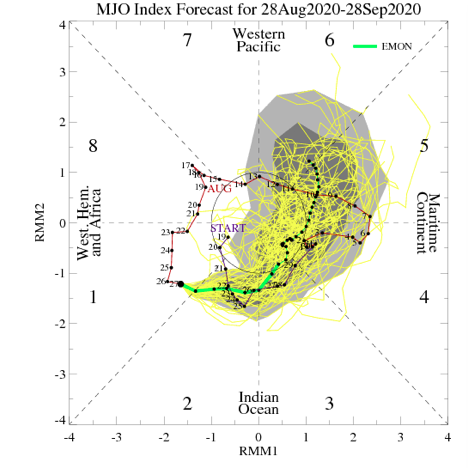


The next couple of weeks will feature multiple cold fronts sliding through the region and each will provide progressively cooler air. The front coming through around Labor Day may even result in the hoodies having to be pulled out for the first time, including an early October-like feel. BUT- note how the MJO wants to rumble into Phases 5-6 towards late month. These will likely lead to a warmer pattern around Sept. 20th (give or take a day or two) through the remainder of the month.
As we broaden the spectrum a bit and focus on September through November, let’s start by taking a look at how the oceans may impact the pattern:

Most models suggest La Nina will peak late fall or early winter before giving way to La Nada by spring.

Aside from the upwelling associated with Laura, most of the Gulf of Mexico and certainly off the East Coast remains much warmer than normal. Unfortunately, this, along with other favorable conditions in the main development region (MDR) will likely continue to promote a hyperactive 2nd half of the tropical season. The other impact will likely be a warmer than normal fall season along the eastern seaboard, bleeding back into areas west of the Appalachians. Furthermore, we think the MJO will lean more towards Phases 6-8 for mid and late autumn.
The blend of the CFSv2 and European seasonal data sees a similar forecast to what we have out for September for the autumn, as a whole:

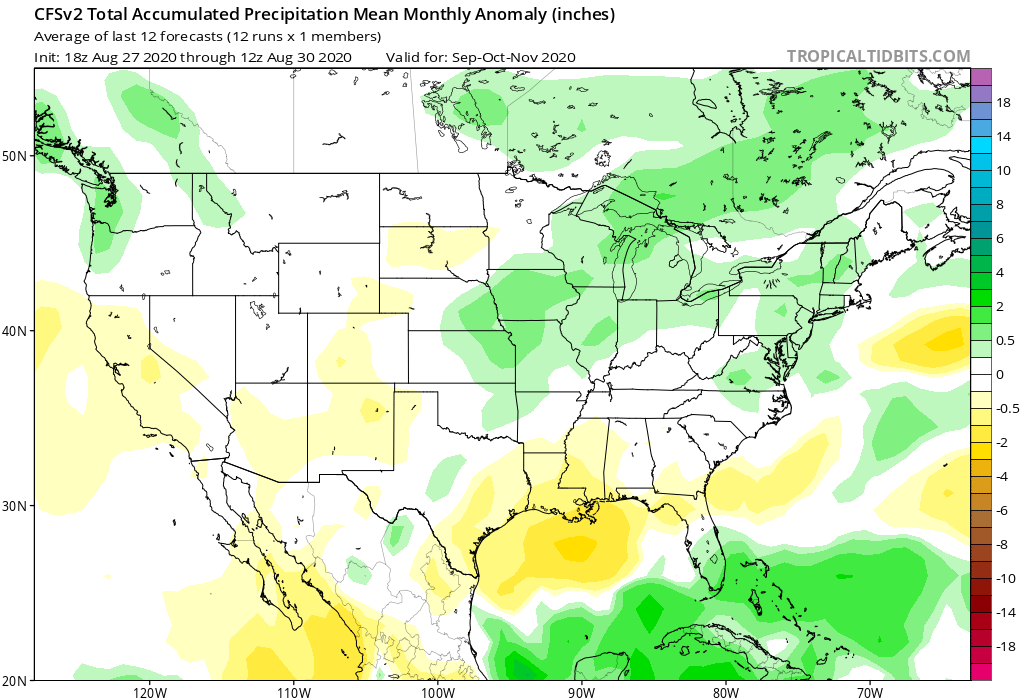

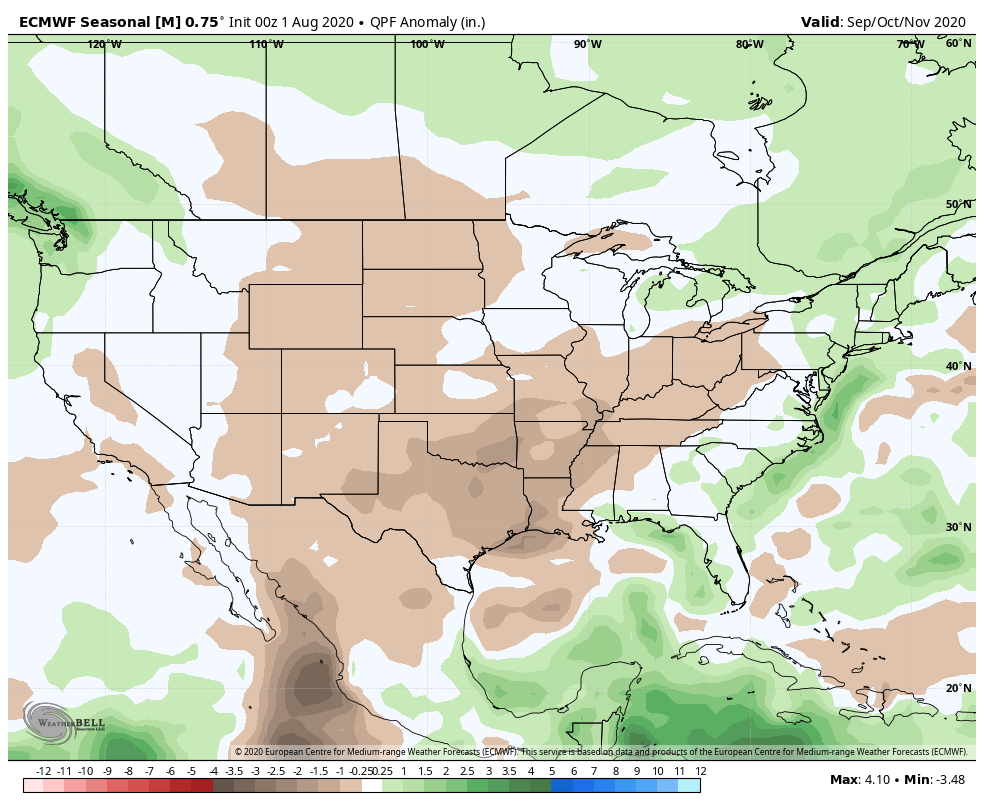
We believe fall 2020 will run slightly warmer than normal for our immediate region with the greatest spot for cooler anomalies to show up throughout the central Plains. After what we believe will be a wet September, things may take a turn for the drier in October before flipping back to wet in November. We prefer the way the CFSv2 handles the precipitation pattern compared to the European.
Next seasonal outlook we produce? Our annual winter package. Tick tock…
Permanent link to this article: https://indywx.com/september-2020-and-fall-outlook/
Jul 22
You must be logged in to view this content. Click Here to become a member of IndyWX.com for full access. Already a member of IndyWx.com All-Access? Log-in here.
Permanent link to this article: https://indywx.com/video-unsettled-weather-continues-today-before-drier-air-arrives-into-the-1st-half-of-the-weekend-busy-open-to-august-on-deck/
Jul 21
I. A round of strong (and locally severe) storms blew through north-central parts of the state earlier this afternoon and as we write this, yet another batch of storms is erupting across IL. These storms should hold together into central IN late evening (targeting a 8p-11p arrival west to east) and a few could become severe. Ingredients in place favor strong, damaging wind gusts with the stronger cells, but there’s also the opportunity for a quick spin-up tornado. Torrential downpours can be expected with any and all storms. It’ll be wise to keep tabs on the local radar this evening.
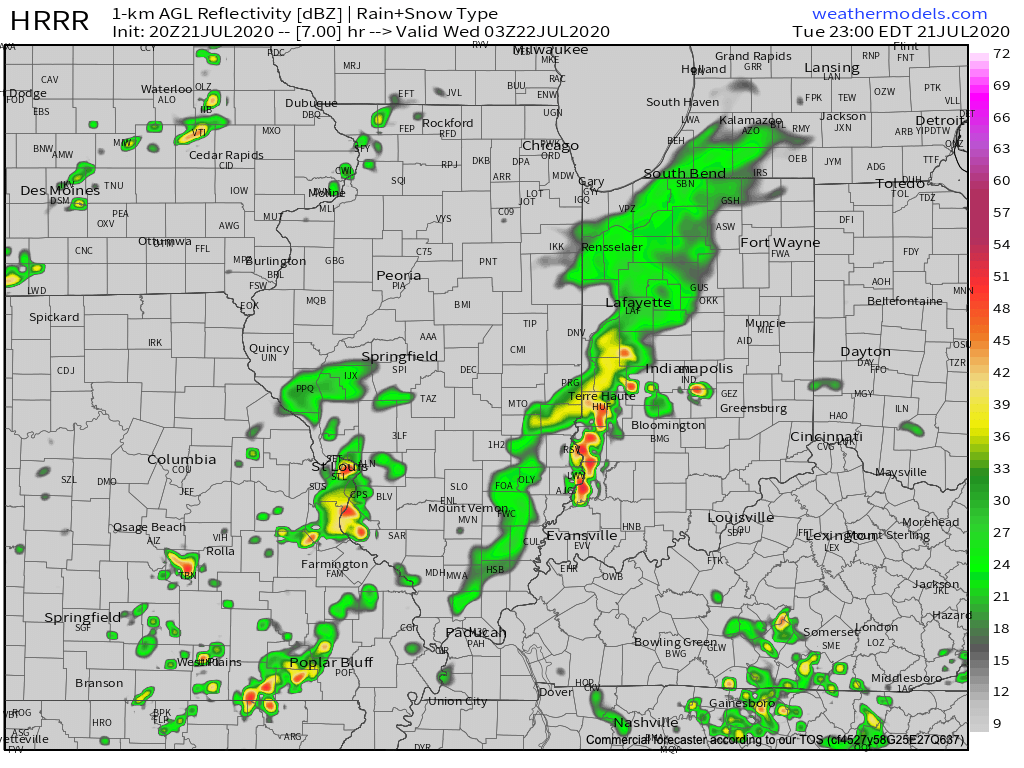
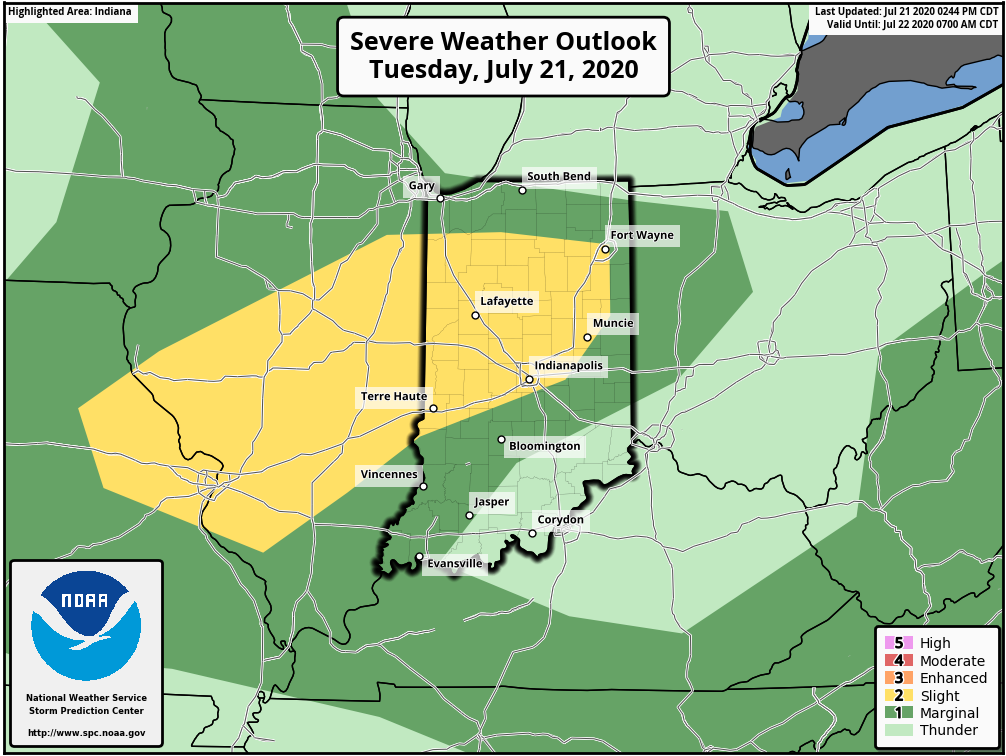
II. As can be expected the deeper into summer we go, the tropics become more active. That’s certainly been the case over the past couple days and all indications continue to point towards a particularly “robust” season as late summer gives way to fall. Interests to the Gulf Coast beaches and Carolina coast should pay close attention to the tropical outlooks in the coming weeks and months. Unfortunately, conditions seem ripe for the opportunity of a few major hurricanes this season, especially when you combine the SST profile with the tendency for the MJO to spend time in Phases 2-3.

In the shorter term, the National Hurricane Center (NHC) is keeping close tabs on the Gulf as well as newly formed TD 7.

III. Overall upper pattern strongly suggests we can expect a very active close to July and open to August. Between next week and the first few days of August, we’re tracking 3 cold fronts that will help to beat back the heat and serve up above normal rainfall through the period (not to mention threat of additional strong to severe storms).
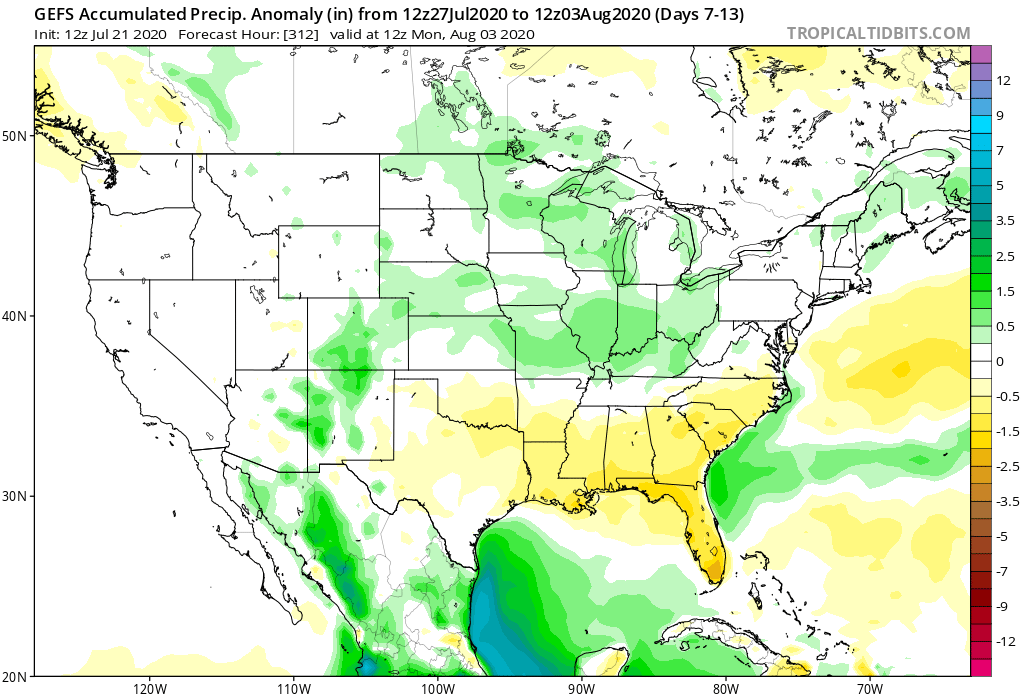
Permanent link to this article: https://indywx.com/another-round-of-storms-inbound-tonight-some-strong-tropics-heat-up-active-pattern-to-close-july-open-august/
Jan 21
January is flying by! With only 10 days left in the month, Indianapolis is running a whopping 8.2° above normal along with more than 3″ above normal in the precipitation department (unfortunately for snow lovers, this excess moisture has fallen primarily as rain, as IND is running a deficit of 5.2″ in the snowfall department).

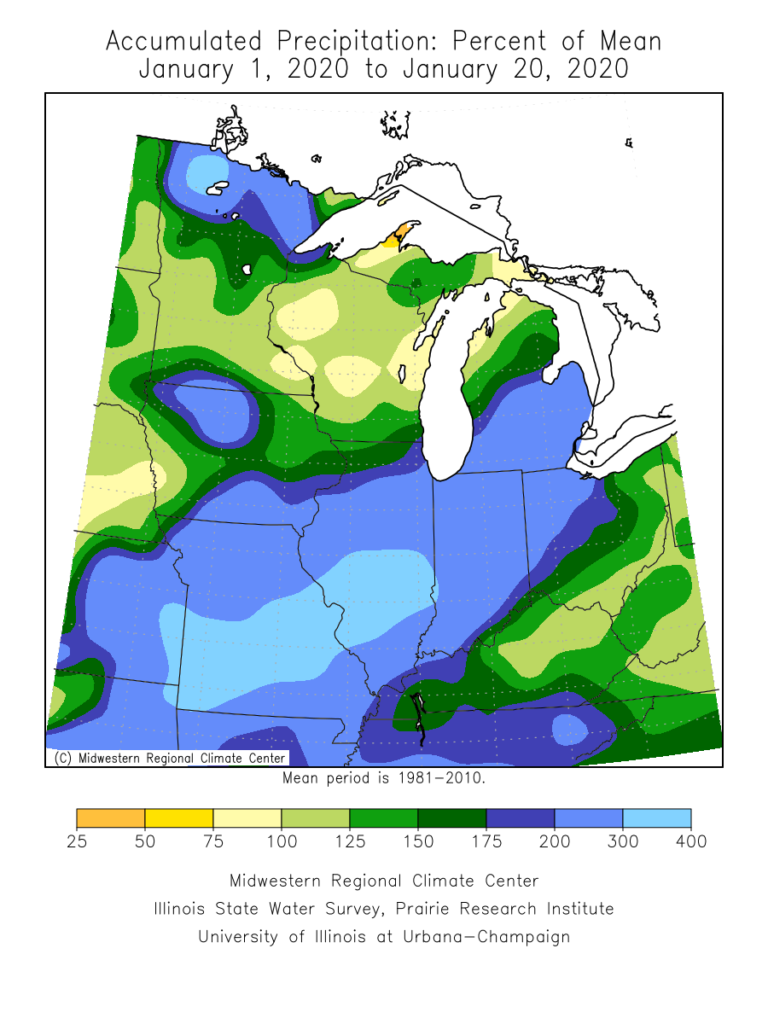
On a broader scale, here’s a look at the current month-to-date temperature anomalies for the Lower 48 as a whole:
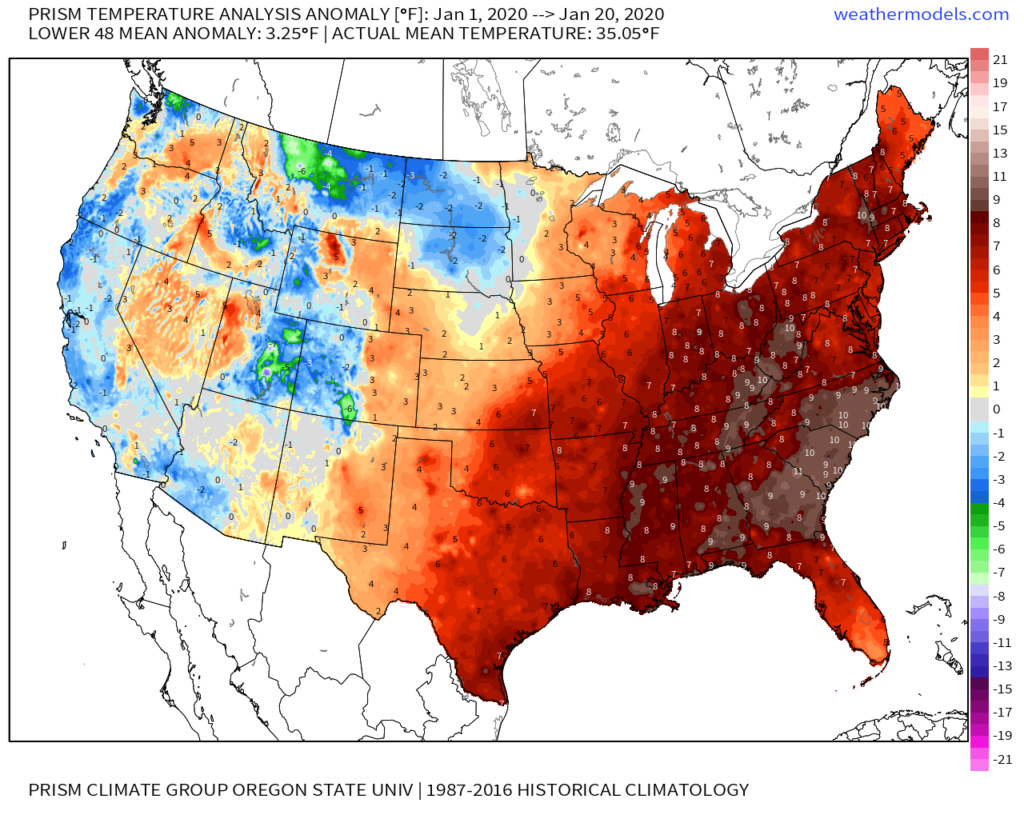
As a refresher, our January forecast looked like this:
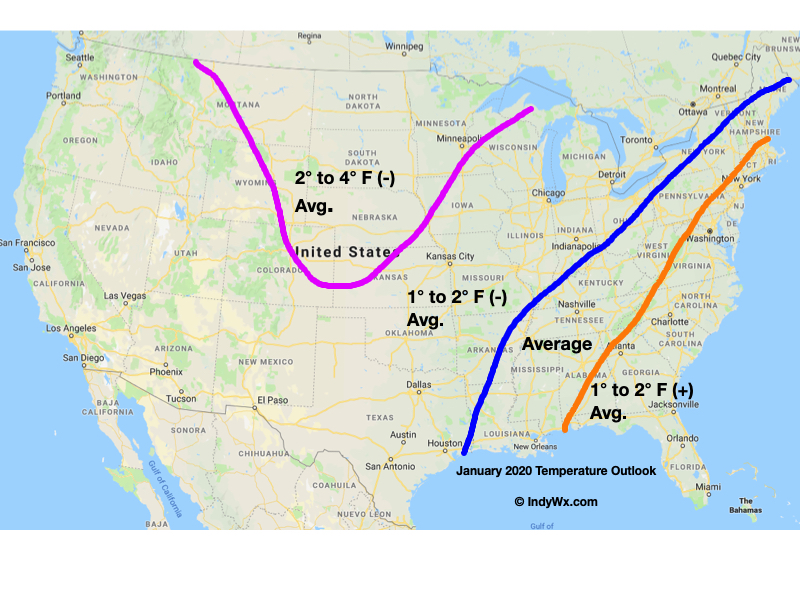
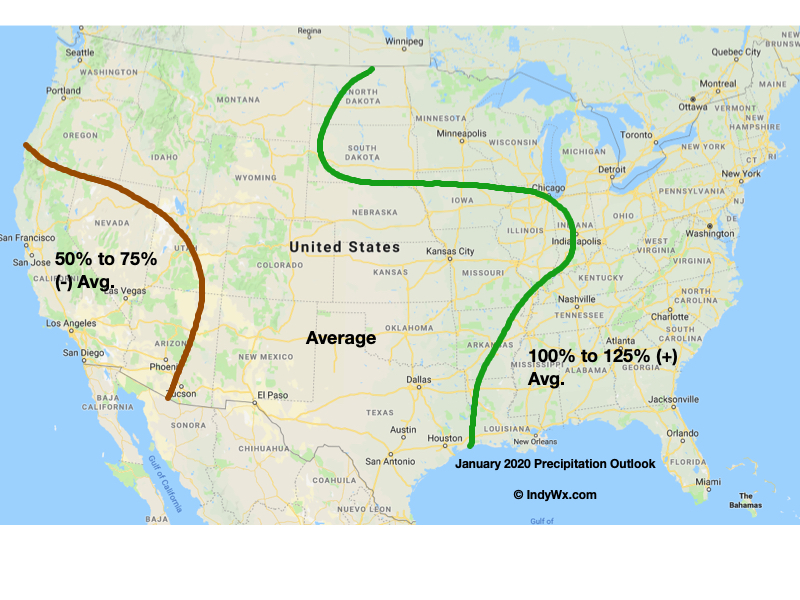
The baseline of this thinking had to do with the idea we had that the MJO would roll out of the warm phases (5 and 6) and strongly into the colder phases after mid-month. Secondly, the other driver was the thought that the current SST configuration in the north Pacific would “force” a negative EPO as the winter season matured.
While the MJO did, indeed, rumble out of the warmer phases just after mid-month, the EPO has not cooperated. Furthermore, instead of the MJO tracking into Phases 8, 1, and 2, it appears it wants to go into the “null” phase to figure out its ultimate destination for the 2nd half of winter (this will be key with Feb. and March). While this doesn’t necessarily support warmth, it doesn’t offer enough ammo to fight the warm signal from the strongly positive EPO.
Now that we’re beginning to turn the page to the 2nd half of winter, there are other items to begin paying closer attention to. In addition to the EPO and MJO, some of these features include the AO, NAO, and PNA. With that said, to drive more of a consistent colder than normal theme, we need to get the EPO at least into the neutral range as some of the other ingredients noted above transition into more favorable colder phases. With a strongly positive EPO, it’ll be tough to sustain well below average temperatures.
With all of that said, all hope is not lost for winter lovers. Climatology speaking, we’re in the coldest time of the year. Even in “marginally” cold patterns, or even “warm” patterns this time of year, wintry issues can create headaches. Secondly, it’s worth paying close attention to the MJO over the next couple of weeks as some of the data wants to take things out of the null phase and transition towards the traditionally colder phases of 8, 1, 2, and 3.

As it is, the next couple of weeks should present a fairly active storm track across the region. In the face of what should truly be a “torch” pattern, the saving grace (at least for fans of winter weather) has to do with the strong Hudson Bay ridge and tendency this kind of pattern has to force stormy times underneath. While far from a “slam dunk,” these kind of patterns can produce- even in the face of a strong positive EPO.
If you had to choose, would you rather have a bitterly cold and dry regime or seasonably mild with at least being on the playing field for wintry mischief over the next couple of weeks?
More in the AM, friends. Make it a relaxing evening!
Permanent link to this article: https://indywx.com/catching-up-on-a-tuesday-evening-and-looking-ahead/